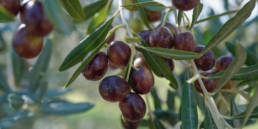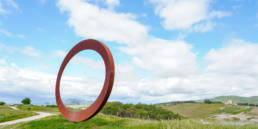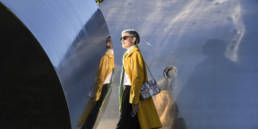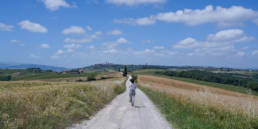This news just in via press release from the Regione Toscana:

The city of Florence and council for the Church of San Lorenzo announced today the ambitious project to finish the facade of the Basilica of San Lorenzo, left incomplete by Brunelleschi in the 15th century. The project, due to start as soon as funds are available, should be done by 2059, in time for the celebrations of Firenze2059 (already the talk of the internet on twitter #Fi2059 and on the website www.Firenze2059.com).
The artist chosen for the honour of completing the facade, after a public contest (“concorso”) evaluated by a committee of 150 citizens and 25 guild-registered artists, is Pablo Echaurren. Dr. Echaurren, astrophysicist as well as maiolica artist from Guadalajara Mexico, has spent the past 20 years in Florence and will be awarded honourary citizenship upon completion of his work. The maiolica tiles that represent massive graffiti-like animals are inspired by 16th-century grotesques, but also by early 21st-century street art.

The decision comes after over two years of deliberations. Arttrav readers will recall that in 2007, an image of Michelangelo’s plans for the facade, drafted in 1516-19, was projected on San Lorenzo. At the time, there was much discussion because the design was in fact not very close to that proposed by Michelangelo, and there was doubt that modern artisans could reproduce the feeling of a Renaissance building. For this reason, a contemporary solution has been favoured.
Dr. Echaurren has developed a brand new technology for the creation of the 2-meter square tiles that will be attached to the facade with a system of metal brackets. The Medici villa at Cafaggiolo, at which there was once a ceramics factory, has been leased to him so that he may use its ancient ovens to create the facade tiles. This is a nice way to link two Medici commissions – the Church and the Villa – with the new commission by the City of Florence.
We asked Annamaria Gori-Cofani della Riva, curator of the International Museum of Tuscan ceramics at Montelupo, for an explanation of the new technique to be used. The brightly coloured, painted tiles will undergo three phases of firing. The first, for the unpainted tiles, will be at the temperature used for commercial porcelain, 1300 to 1400°C. The tiles will then be glazed and re-fired; finally, a third cooking at lower temperature with oxidization agents such as toenails and bones will help create a metallic sheen on certain detail areas. This technique was used during the Renaissance in Gubbio, but this will be the first time that it will be reproduced in Tuscany.
As we have learned from years of restoring the Duomo, easy maintenance should always be a factor when choosing buildings. Cleaning the new facade will be very easy, much easier than the current stone version, because ceramics are highly resistant. The artist pointed out that common bathroom liquid like “Mr. Clean” or kitchen soap like “Palmolive” will do the trick with a sponge or squeegee.
The new facade will come at the cost of 17.4 million euros, but the City is adamant to explain that this will not come from taxpayer funds. Rather, the money will be raised with the sale of a portion of Piazza Signoria for the creation of private, luxury apartment buildings. These buildings will not obstruct view of the Palazzo Vecchio as they will be made entirely of transparent glass.
For further information please see www.Firenze2059.com and extended art historical reportage at http://Firenze2059.tumblr.com
Your comments are welcome below.
Sign up to receive future blog posts by email
Alexandra Korey
Alexandra Korey aka @arttrav on social media, is a Florence-based writer and digital consultant. Her blog, ArtTrav has been online since 2004.
Related Posts
November 17, 2021
My favourite suppliers of Tuscan olive oil
May 20, 2021
Volterra: Art, Wine and Minerals
January 17, 2021




